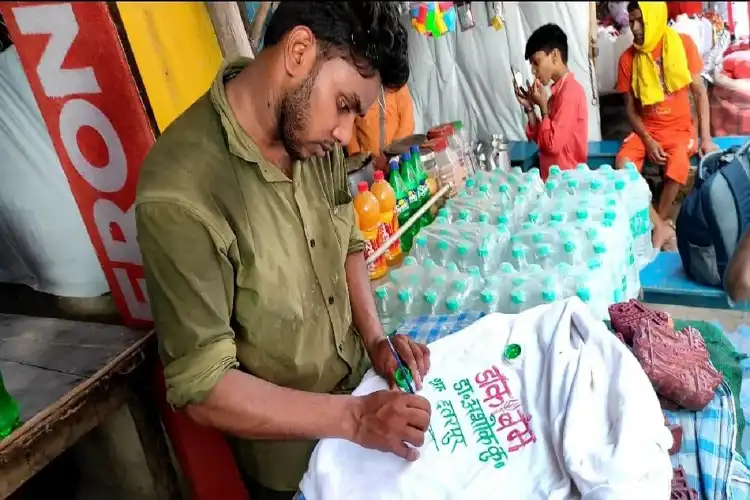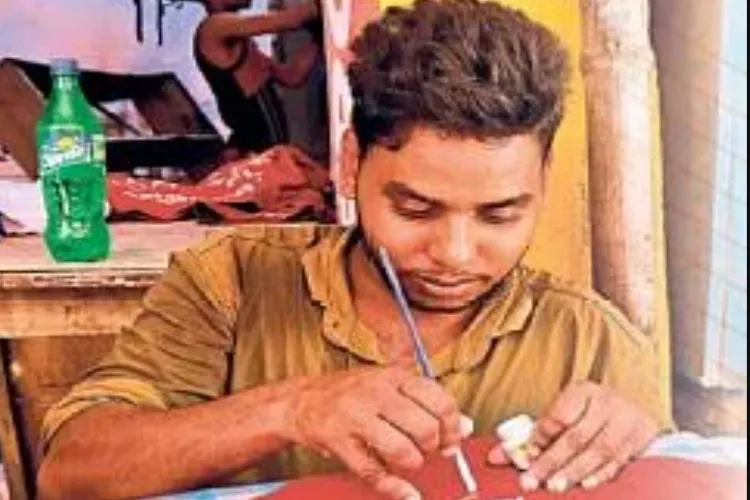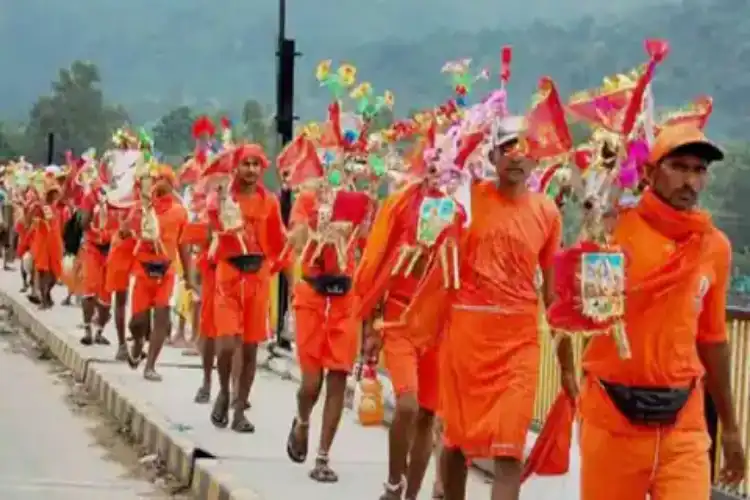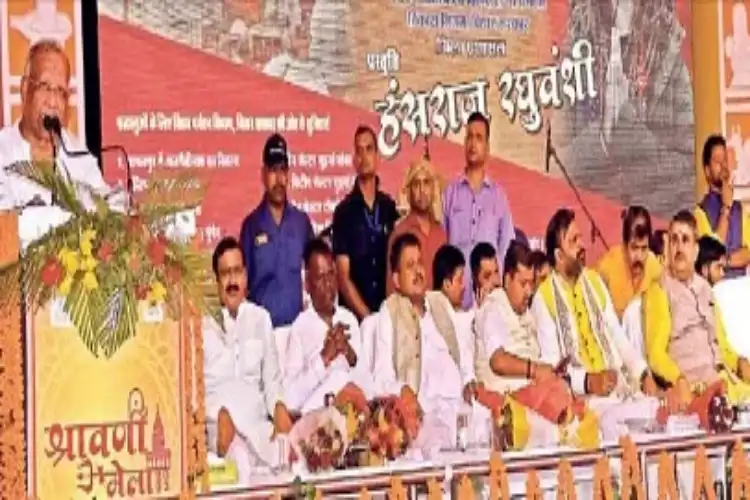
Seraj Anwar / Patna
Mohammad Wasim of Sultanganj in Bhagalpur district of Bihar is a busy man these days. He paints names and detailed addresses of Kanwariyas – devotees of Lord Shiva who walk on foot to the Ganga River to fetch its water for offering it at temples in the month of Shravan – on their T-shirts and vests.
Mohammad Wasim has inherited this profession that he considers not only a source of his livelihood but also a holy duty and his way of serving the Almighty.
Besides the more-into-focus pilgrimage to Haridwar in Uttrakhand, each region has specific Kanwar pilgrimages involving devotees walking long distances on foot.
In Bihar, Kanwariyas have set out on the 105-km pilgrimage to Baba Vaidyanath Dham located in the Deogarh district of Jharkhand, where they carry the water of the Uttarvahini Ganga flowing in Sultanganj.

Mohammad Wasim engrossed in his work
As soon as the Shravani Mela begins heralding the fifth month of the Samvat calender, Sultanganj is crowded with Kanwariyas and many of them are Muslim.
Like Mohammad Wasim, about 25-30 Muslim families of Sultanganj are traditionally engaged with Kanwar-making. Kanwar is an embellished contraption fixed at two ends of a bamboo stick that is used to carry the Holy water by the pilgrims on their shoulders. It’s designed in a way that the urn of water does not touch the ground.
Though the month of Sharavan raises the demand for Kanwar manifold, their products are in demand throughout the year.
Why do kanwariyas write names and addresses?
Mohammad Wasim’s hand-painted tops are worn by Kanwariyas for identification. The idea is that even strangers should be able to identify them in case they fall unconscious on the way or meet with some other trouble.
Mohammad Wasim with a pilgrim-customer
In such conditions, their addresses, mobile numbers, etc. painted by people like Wasim come in handy for getting them help.
Wasim uses dyes mixed with fevicol to ensure it doesn’t run away due to rain. He just earns Rs 20 to 50 for his work. He says his father Mohammad Sharif and also grandfather had been engaged in the work for 40 years. Today, Wasim and his brother, and his sons are carrying on this profession. The family hails from Khagaria.
Sultanganj is full of shops selling kanwars, food, water pots, clothes, etc. for the benefit of the pilgrims who need to carry the holy water with a lot of restrictions on its handling and their conduct.
Sharif and his brother say they stay put at the Ganga Ghat for three months for a brisk business. Their shop is lined with T-shirts with religious slogans painted and ready to be customized for individual pilgrims.

Pilgrims progress; Kanwariyas on the march
He says they would stay there for three months till the month of Durga Puja (in October-November). His sons have also joined in recently.
Javed, who lives in Sultanganj, said that the month of Shravan is a holy month for Muslims too. Muslim Youths volunteer to receiving and facilitate the journey of Kanwariyas.
Mohammad Qasim, who is associated with the work of making Kanwar, says that his father and grandfather also used to do this work.
He said, “We have been running the family expenses by making kanwar for the last 17 years.
"We start preparing for Shrawan two-three months in advance. In this work, we follow all the rules of purity. I learned this art from my father. Bamboo, velvet cloth, bell, sea shells, and plastic snakes are used in the manufacture of kanwar.”

Inauguration of the Shravani Mela (Fair)
Many versions of kanwars are also made by incorporating precious materials in these. In Shrawan, about one lakh kanwars are sold per day. The price ranges from Rs 250 to Rs 1000.
The town of Sultanganj is wearing a festive look since the Shravan Mela was inaugurated on July 14. The slogan of Bol Bam, Baba Ek Sahara is echoing after two years of pandemic-induced lockdown that resulted in a ban on pilgrimage.
This year, the administration has made extensive preparations for the Shravani Mela. The shrine of Baba Baidyanath is one of the 12 Jyotirlingas holy to Hindus. Its religious significance also lay in the fact that it’s also a Shaktipeeth, the seat of Female divinity.
Also Read: Agra Muslims ready to welcome Kanwar Yatra pilgrims
Legend has it that Lord Shri Ram first traveled from Sultanganj to Deoghar with the water from the Ganga. The tradition has been followed by people in the region since time immemorial.
